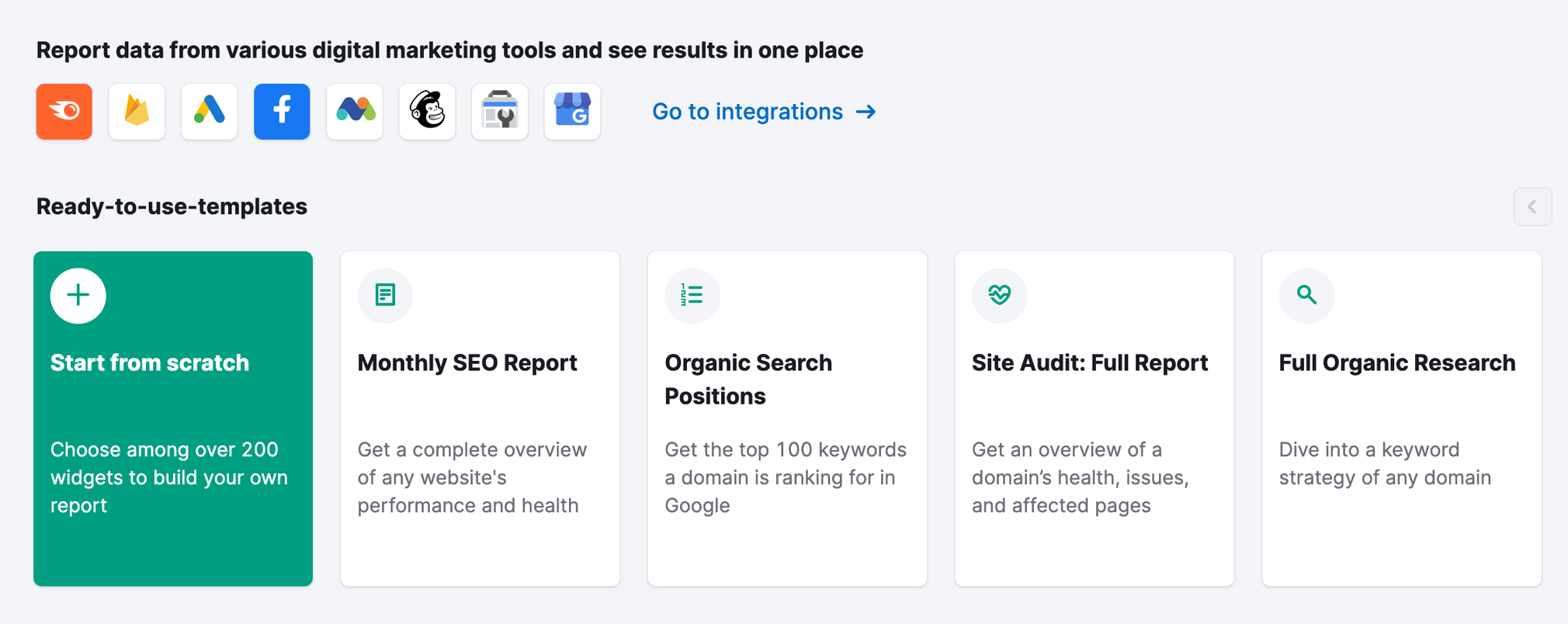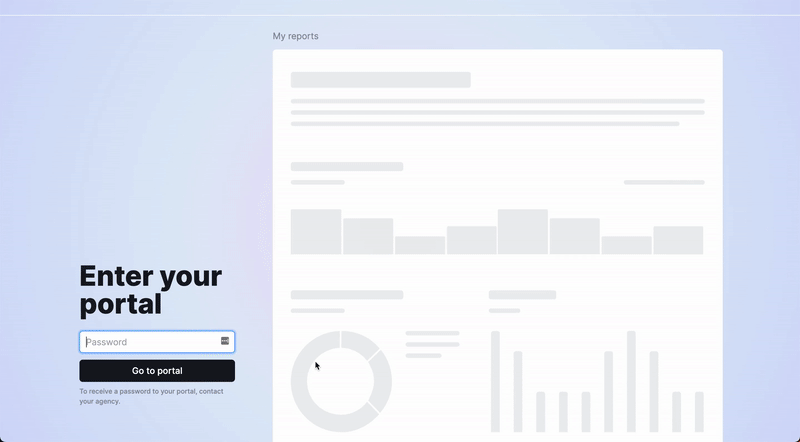Working at an online marketing agency, you probably spend a lot of time preparing client reports.
Let’s face it. Creating reports for your client is a tedious task. The purpose can often seem unclear, and, before you know it, the next one is due.
You might wonder sometimes: What’s the point? And is there a way to do it better?
In this article, you’ll find a quick recap of what client reporting is really about, and why it matters. Read our insights on how to create a standout report for your client and demonstrate the value your agency provides. Get tips on how you can leverage our My Reports tool to create more powerful client reports, faster, and more.
What Is Client Reporting?
As any other business serving clients, your digital marketing agency has a responsibility to account for the work you’ve been commissioned to do. Clients expect to be informed about the allocation of resources and the performance of campaigns on a regular basis.
To this end, you have to monitor relevant metrics, such as website traffic, social media engagement, ad spend, and CTR. And then you must share the performance stats with your clients. The resulting documents are called client reports.
Depending on the nature of the collaboration, you can send these reports at daily, weekly, or monthly intervals. Alternatively, you can choose to give clients access to an “always-on” dashboard displaying the latest data.
Why Client Reporting Is Crucial
Though it might seem like the most boring task on your to-do list, client reporting may well be one of your highest contributions to the agency. Here’s why.
Client Reports Can Set Your Agency Apart
Clients need to feel justified in their choice of working with you. Client reporting is one possible means of differentiating your agency from your competitors. If your reports are consistently high quality, if they reflect your company values, and of course, if they prove that your efforts are successful, they can help to reinforce your agency’s competitive edge.
Reports Can Educate Your Clients
Remember, your clients, though experts in their own field, might not fully understand what you do. Use your reports as a recurring opportunity to educate them about your work: and how you leverage online marketing tools and practices to drive more revenue for them.
Client Reporting Helps to Build Trust
From the clients’ point of view, agency work goes on behind the scenes. They can’t see what’s happening with their projects. Most of the time, they have to rely on faith—an optimistic assumption that you’re doing a good job. By opening a window into your work, client reports provide transparency, which is essential for earning their trust for the long haul.
Client Reports Enable You to Track Your Progress
Your clients won’t know how good you are unless you tell them. Ultimately, this is what client reporting is for: to track the progress of your campaigns and to showcase the results of your work.
If your expertise is helping to move the needle, client reports act as proof. If there’s room for improvement, they can serve as a reference, so you can follow how your success rate evolves over time.
How to Create a Client Report
If you’re new to client reporting, here’s a practical guide for getting started with your first report.
Choose Your Metrics
The initial phase of client reporting should take place well before there’s anything to report on. Right off the bat, when onboarding a new client, find out which metrics best describe the progress toward meeting their objectives. These metrics should form the basis of your campaigns for this client, and they should be the focal point of your client reports.
1. Gather the Data
Once you’ve got the metrics pinned down, use the data analytics tools of your choice to monitor them over pre-defined periods of time, and to display the resulting statistics using various forms of data visualization.

2. Build the Report
Because client reports are heavy on data, and because your clients are strapped for time, it’s important to structure your report in a user-friendly way.
Start off with an agenda. Be sure to include an executive summary at the beginning. Present your data in a clear and concise way. Wrap up with a recap of results over the period the client report covers, and by listing what you aim to achieve by the time the next report is due.
3. Share the Report
Agree with your client on how often and in what format you’ll share the reports.
A number of factors can shape your reporting frequency, including industry standards; campaign objectives and lifespans; campaign phase; the type of service you’re providing; available budget and resources; as well as the client’s level of involvement with your work.
Some clients prefer PDF reports they can share or save for future reference, while others appreciate the interactivity and real-time access to data provided by client dashboards. The choice between these two options also depends on the complexity or the sensitivity of the data presented; the need for additional explanations, which is better served by a PDF report; and if there’s discussion or collaboration around the results, which calls for a client dashboard.
Expert Tips for Making Killer Client Reports
If you’re familiar with the basic steps of creating client reports, consider these nuggets of wisdom to take your reporting to the next level.
Streamline the Process
Important as client reporting may be, you don’t want it to take all day. To free up time to focus on your strategic marketing activities, automate the data gathering and reporting process as much as possible. Re-use existing reports as templates instead of starting from scratch every time.
Make Your Reports About You and Your Client
It’s all well to use report templates and automation, but make sure it doesn’t result in “mass-manufactured” client reports. These shortcuts free you from a lot of mindless admin, but going the extra mile to brand your report, sync it with your agency’s visual identity, and customize it for your client can go a long way.
Also, tailor the format and the data visualization to your client’s preferences. Add personalized executive summaries; incorporate client feedback and demonstrate how it’s been addressed; attach case studies, exclusive research, or insights relevant to the client’s industry.
Turn Your Client Report Into a Compelling Story
Whomever you’re writing your report for, don’t cause their eyes to glaze over. Instead of simply presenting various sets of data, tell a story that makes sense of them:
- Provide context; explain the highs, the lows, and the fluctuations in your charts
- Make the most of visual storytelling techniques to emphasize key takeaways
- Show the big picture: give a comprehensive overview of your marketing activities across multiple channels
- Keep your client report short and sweet, focusing only on stats that are relevant to your narrative
Include Bad News in Your Client Report
However, don’t hide unsatisfactory results. This might sound like a counterintuitive piece of advice, but being outright about failures actually makes your client reporting better.
Remember, a healthy agency-client relationship hinges on honesty.
Never gloss over campaign elements that have performed below expectations, especially if this trend has been persistent over several reporting periods. Be sure to include KPIs that signal a problem, because communication with your client is crucial for fixing the issue.
In fact, always try to identify new areas for improvement, even when you have successes to report.
Discuss the Report With Your Client
Never trust your client reports to do all the talking, because issues and trends can get overlooked or lost in translation. Even the most finely crafted reports or interactive dashboards cannot replace actual dialogue between agency and client.
So take client reporting as an opportunity to initiate a conversation. Every time you share a report, or at regular intervals of your choice, book a meeting or call, and discuss the progress of your campaigns with your client, ask for their feedback, and brainstorm next steps together.
Client Reporting with Semrush
Shopping around for the right data analytics tools? Consider My Reports 2.0 by Semrush, complete with all the features you need to make outstanding client reports.
Keep Clients up to **** With Regular Reports
If PDF reports are your client’s preferred way of getting updates, use My Reports to:
- Generate cross-channel reports, combining data from various digital marketing tools
- Select precisely what data to include
- Showcase your results in the format of your choice: numbers, line graphs, tables, or pie charts
- Auto-update existing reports with the latest information
- Use custom design themes and add your branding to own your reports

Report and Collaborate via Client Portals
If you have accounts that require constant monitoring of results and close collaboration with the client, consider our Client Portals*. These enable you to:
- Provide access to real-time performance stats in the form of auto-updated online dashboards
- Ensure the security of your data with password protection
- Track progress by defining tasks and updating their status
- Collaborate with the client and request their approval for each task
You can even embed Client Portals in your agency’s website for a seamless client experience.
*Client Portals are available as a part of the Agency Growth Kit.

Create Better Client Reports Today
Remember, regular updates about your campaigns’ progress are an essential part of client management.
Use client reports to celebrate your successes, to map out areas for improvement, to educate your client about the added value of your work, and to engage them in conversation.
But don’t get bogged down in the admin of churning out client reports. Let smart tools like My Reports by Semrush do the heavy lifting for you.
Source link : Semrush.com
